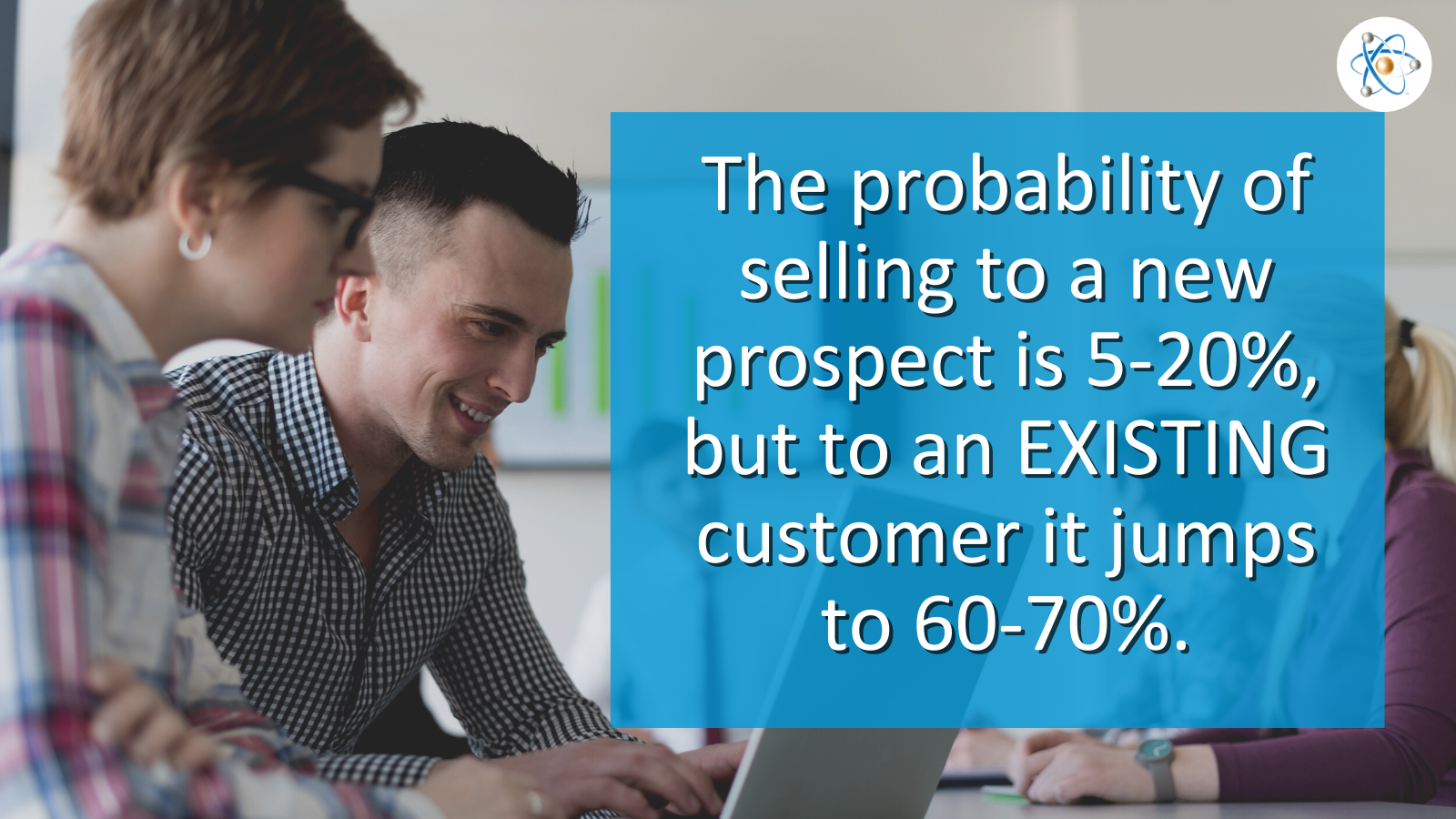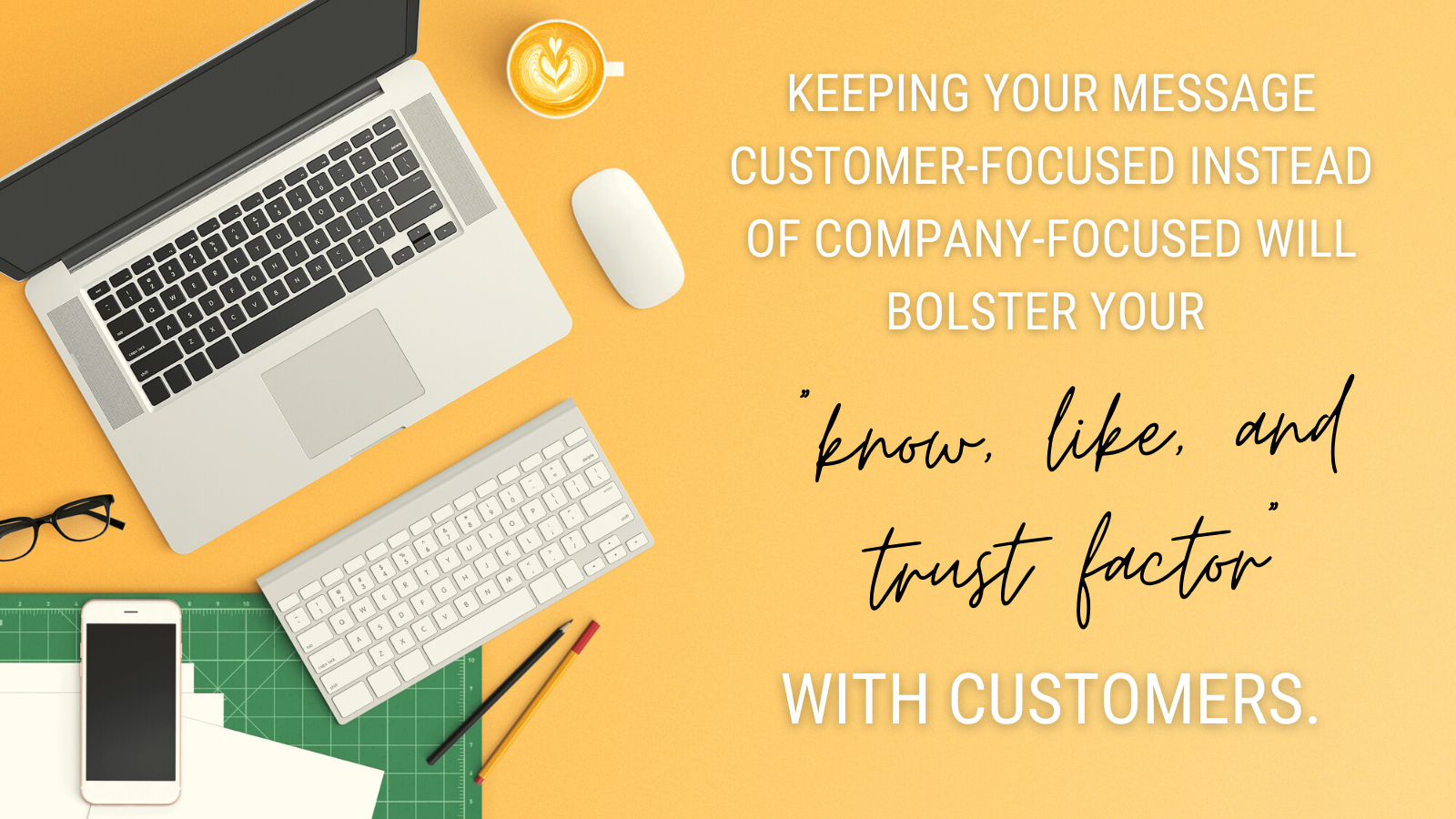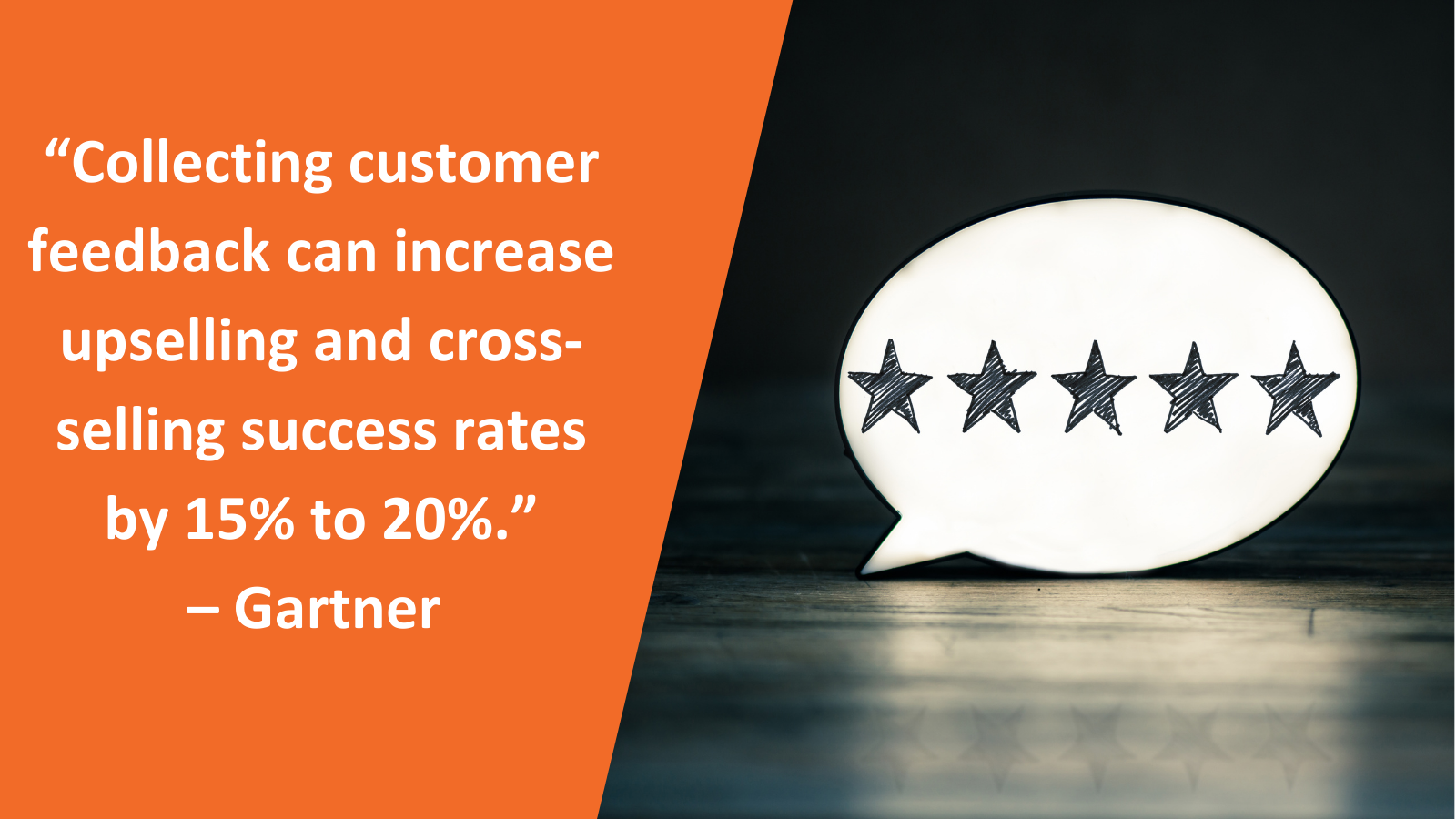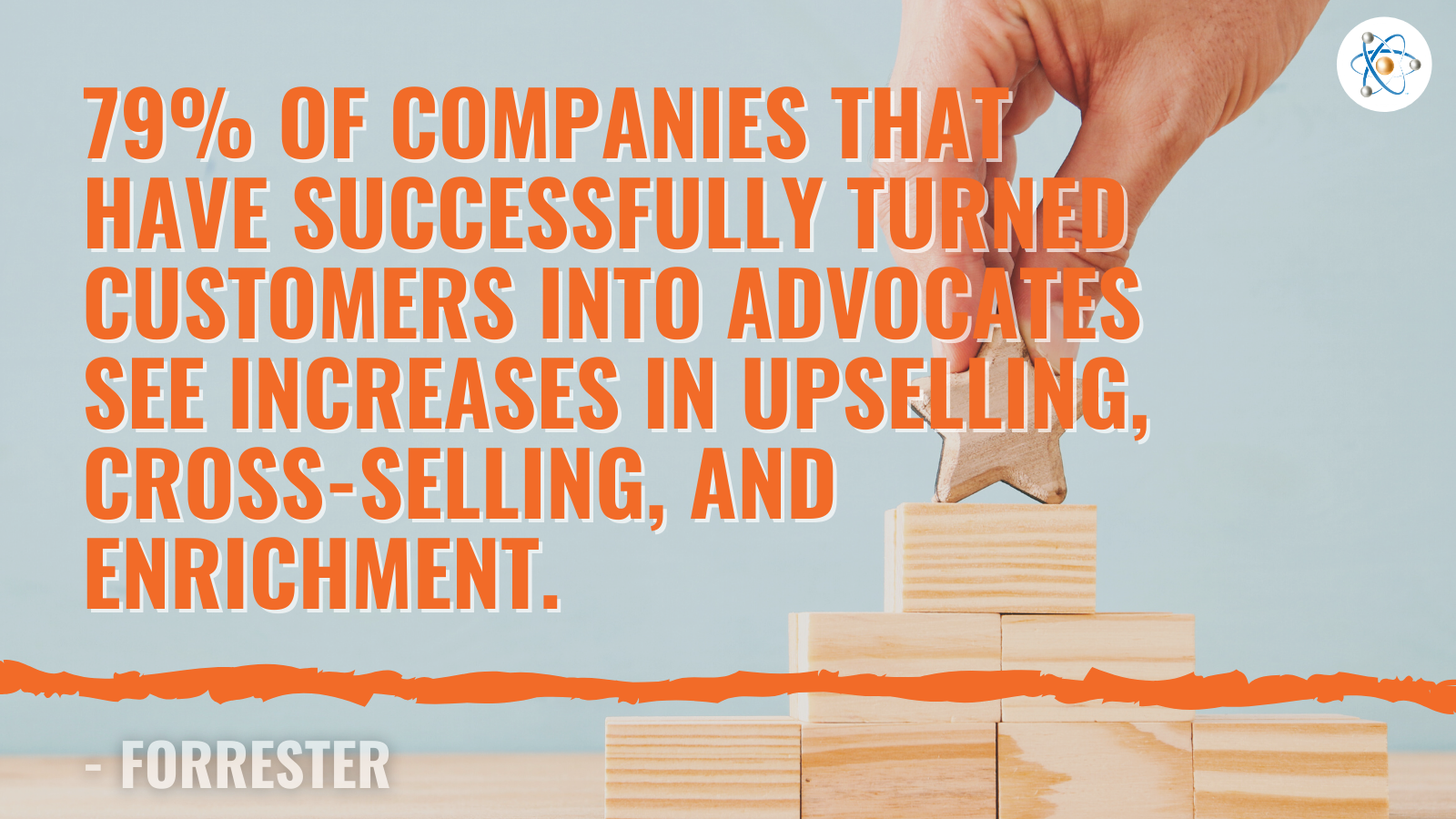
Are you marketing to your own customers? Many B2B business leaders put this task on the back burner when it really should be a top marketing priority. Why? Your customers already know you, your products and/or services, and hopefully have had success with what you offer. Ultimately, customer marketing develops a positive customer experience (CX), resulting in customer advocacy, a core component of profitable growth. Your current customers are a wealth of hidden revenue potential!
If you are not sure how to market to your current customers or convinced it is money well spent, this blog will provide 4 Steps for Marketing to Your Own Customers with comprehensive examples, and share why this tactic is crucial to the growth of your company.
“Investing in new customers is between 5 and 25 times more expensive than retaining existing ones.” – Hubspot, 2021
Steps for Marketing to Your Own Customers
The best-performing companies focus their marketing and sales strategies around their top customers, the ones who are the most profitable and most likely to buy. Therefore, your marketing efforts and sales tactics should focus heavily on your top customers for retention and additional sales opportunities.
When marketing and sales are aligned, then sales will trust marketing to get effective messaging to customers and marketing will trust sales to carry out the up-sell or cross-sell opportunities. Ready to get started? Take these four steps to success.

Step 1. Segment Your Customers Into Marketing Lists
Not all your customers are created equal. You need to segment your customers to provide focus and optimum results.
- First, sort your customers by sales potential by using a “good, better, best” approach. Have you identified your best customers? For many businesses, these top customers deliver the majority of revenue. They make up the 80/20 rule where, generally speaking, 80% of your sales/profits are generated by just 20% of your customer base. That 20% is key to your revenue growth. They deserve your attention, to be nurtured, and appreciated.
- Second, sort your customers by their specific product/service opportunity potential. They all have different needs, require different solutions, and are on their own buying timelines.
- Of your best customers, who can you identify as most likely to add a complementary product to enhance what they already purchased from you (cross-sell)?
- Of your best customers, who can you identify as the most likely to upgrade to the next level of product or service (up-sell)?
- Based on the sales cycle/use cycle, who needs to be resupplied with what they have purchased before?
You should be able to use your existing sales KPIs and customer data history to evaluate these progressions and identify current customers who fit into one or more of these segments.
Through customer marketing, you nurture and expand relationships with clients, which improves retention rates, builds customer advocacy, and increases revenue performance.

Step 2. Set Your Customer Marketing Goals, Strategies, and Tactics
Always have marketing goals and strategies for any actions you take to move your business forward. If you don’t have a lot of data or analytics to help set your goals, you can make reasonable assumptions. Don’t let the thought of not having all the data you need right away stop you from creating a customer marketing plan. You can work on logging information into a CRM or data dashboard as the process unfolds.
Marketing is fluid and not set in stone, so components can evolve. Keep in mind as you do this, understanding the buyer journey through your sales process will deliver the best results.
Examples of marketing goals for existing customers might be:
- Increase overall sales from existing customers by 15% in our fiscal year.
- Gain 60% of the overall sales increase from our top customers.
- Gain 30% of the overall sales increase from our general customer base.
- Gain 10% of the overall sales increase from recently inactive customers.
With your goals set, now you can develop strategies to deliver on the goals. For example, some strategies may include:
- Create a year-long campaign to raise brand awareness (any new offerings?).
- Create special offers by customer segment.
- Employ customer advocacy to drive incremental sales.
With your strategies in place, now you can develop tactics to execute the strategies. For example, some tactics for each strategy might include:
- Create a year-long campaign to raise awareness of our brand:
- Internet banner campaign
- Drip email campaign
- Social media “brand” posts
- Blogs
- Customer surveys
- Focused PR campaign
- Trade shows
- Holiday cards
- Create special offers by customer segment:
- Up-sell offers
- Cross-sell offers
- Sales-cycle offers
- Welcome-back offers
- Referral offers
- Membership offers
- Employ customer advocacy to drive incremental sales:
- Feature customers’ testimonials across all mediums.
- Invite customers to follow you on social media and share their stories.
- Create a campaign that shares positive customer case studies featuring your products/services.
Appreciating your customers’ problems and pains is critical in the language that you use to communicate your offerings and solutions. Keeping your message customer-focused instead of company-focused will bolster your “know, like, and trust factor” with customers. This makes them more likely to buy again, advocate on your behalf, and send referrals – the most cost-effective way to grow sales.

Step 3. Create Special Offers For Your Customers
Existing customers can be a much easier sell and less costly to cultivate than new customers. Marketing to existing customers also helps build your brand overall, and strong brands can demand premium prices. Since your customer base is the best low-hanging-fruit opportunity for additional sales, you can focus on cross-selling, up-selling, renewals, and new business leads/referrals to gain extra traction and grow this segment.
Although marketing to active and idle customers should encompass all aspects of marketing, let’s talk about utilizing the three main sales opportunities with special offers. Each requires a solid marketing plan and a bit of sales nurturing, all of which culminate in a much higher ROI than targeting potential leads.
Identify Opportunities for Current Customer Growth
- Cross-Sell Revenue
A great relationship with existing customers opens doors to discover other needs. Using customer marketing to introduce other products or services that add value and enhance their experience with you helps to cross-sell products/services, and aids your salespeople in selling them. - Up-Sell Revenue
Satisfied customers will learn about new, upgraded products or services through marketing. Since they have bought from you before, the close rate for selling additional, possibly higher-margin solutions is exponentially better than the close rate for selling to a first-time customer. - Renewal/Retention Rate
Happy customers will continue to buy from you, and you will retain their business. Repeat sales, or the renewal rate, is especially important in any recurring revenue business model. This can be fostered with membership programs, subscriptions, customer appreciation deals, referral discounts, etc.
Now that you’ve identified all the ways in which you can sell to your customers, it’s time to market to them and create advocates with a strong customer marketing strategy.
Special-Offer Strategies for Customers
The key to any business growth is to make your customers feel special and appreciated, or they may buy less frequently or never again. Recognize their value as customers and express your appreciation for their business. A great way to do this is to create customized offers by customer segment based on your marketing goals. And yes – even B2B companies can implement special offers on products and services. Special offers can even differentiate you from your competition.
For example, for customers who purchase on a regular cycle, you may want to offer them an “XX% discount” on their next purchase when “purchased by X date” as a thank you for their continued business. Adding an offer expiration date speeds up the sales cycle.
Another special offer strategy for your best customers is to offer them special “customer only” pricing when they purchase the next level of product or service (up-sell). For high-potential customers who haven’t purchased recently, you can offer them a “Welcome back XX% discount on your next purchase” to thank them for their past business (new sales from inactive customers).
A cross-sell marketing piece may state, “You’ve told us that you really like our services, so we’re offering an existing-customer-only opportunity to buy our XX complimentary service at a special price.”
When you implement a special offer, you have a valid reason for salespeople to follow up with customers, personally thank them for their business, and review their special offer. Most customers will be receptive because they already know you and most appreciate the in-person contact.
“Collecting customer feedback can increase upselling and cross-selling success rates by 15% to 20%.” – Gartner

Step 4. Measure, Evaluate, Adjust Your Customer Marketing Strategy
After your customer marketing plan is implemented, it is important to continually measure, evaluate, and adjust your progress against your goals using meaningful, customer-success KPIs. As previously mentioned, marketing is fluid and not set in stone, so components can change as you adjust for what is working and what is not.
When you identify the components in your plan that are working well at delivering results, go ahead and double down!
On the flip side, if you find lackluster results in a particular area of your plan, don’t be afraid to adjust — even if that means ditching specific tactics or revamping a strategy or two. Remember, you have a relationship with your customers, so don’t be afraid to contact them and ask for feedback on your offers. Find out what was appealing and what wasn’t, then fine-tune.
“59% of customers say tailoring interactions based on past engagement is key to winning their business.”– Salesforce
Let’s Talk Customer-Specific Data for a Minute
At the beginning of your customer marketing strategy, if you don’t have the data you need to create a metric-based plan, that’s okay. However, you need to be collecting data as you move through the process. The only way to make changes and improve what you’re doing is by looking at the numbers. Without good data, you’ll be perpetually lost on your marketing, sales, and customer advocacy journey, and so will your customers.
Feedback becomes data that are used as your key performance indicators (KPIs). This data can come from your sales team, customers themselves, actual sales figures, conversation details, and any number of different sources – anything and everything to do with customer-related communication and the buying cycle in relation to your marketing strategy.
Don’t have a good database? Is your tracking system time-consuming and dreadful? A Customer Relationship Management (CRM) tool can solve your KPI disorganization. A CRM is a simple, effective tool to manage and monitor your marketing and sales processes. It allows you to track exactly what your efforts are producing (and what they’re not), what your customers need from you, and what you can do better for your customers (and leads too) with low overhead, little effort, and quick results.
Implementing a new CRM or using the one you already have can seem overwhelming, but it is a simple tool (yes – it really can be simple!) that will provide what you need to move forward. Without data-driven indicators of performance, you will end up throwing good money after bad and not giving customers what they truly want.

Customer Marketing Promotes Customer Advocacy
If you are like most business leaders who, before reading this article, thought marketing to current customers was money NOT well spent, it bears reiterating that without repeat sales and referrals, revenue will always be unpredictable and unstable, that’s why customer marketing that ultimately promotes advocacy is imperative for consistent sales growth.
With a good customer marketing plan and execution, compelling offers, positive communication, meaningful KPIs to help with any adjustments, and collaboration between your marketing and sales teams, you can count on your current customer base to deliver additional sales and do more than uncover their hidden potential –– they will positively affect profitability.
Need some assistance with this process? At Atomic Revenue, our marketing and revenue operations experts are known for creating exceptional, data-driven customer marketing and advocacy strategies. To get an idea of the ROI you could earn with less effort and better results, be sure to contact us today for a no-obligation conversation about marketing to your B2B customers.
 About the Author
About the Author
Tom Schmittdiel is an Executive Partner at Atomic Revenue and Principal of TPM Creative Marketing. In over 30 years of marketing and advertising experience, Tom has delivered innovative and effective marketing and branding solutions for all-size B2B and B2C firms, including Procter & Gamble, General Mills, Rubbermaid, Champion Sparkplugs, Monsanto, Tricor Braun, Novus International, ArborGen, and Tyco Healthcare, among others.
Tom supports Atomic Revenue’s mission and our clients with his expertise and passion for marketing and brand development, brand building, and an integrated marketing approach, providing clients with the insights, road maps, tools, and creative ideas to help grow their businesses.





